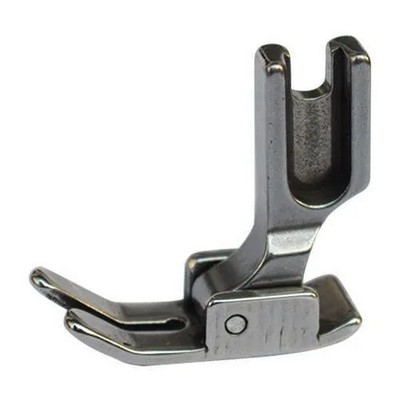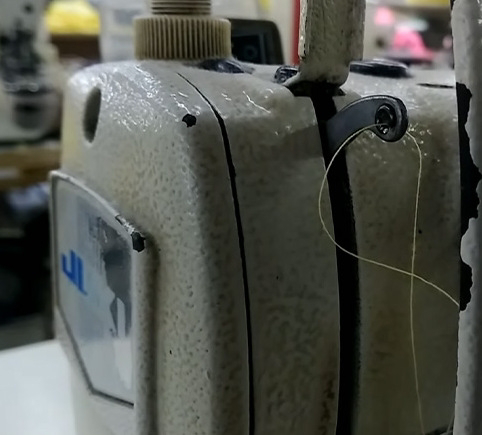Basic parts of sewing Machine and Their Function:-
Basic Parts of Sewing Machine and Their Functions:
EARLIER I HAVE DISCUSSED ABOUT THE EMBROIDERY ON THE FABRIC WITH DIFFERENT MACHINES AND DESIGNS .
NOW HERE I AM GOING TO DISCUSS ABOUT THE MAIN OPERATION OF FABRIC WHICH NECESSARY TO PRODUCED THE READY FABRIC ANY TYPE .THE PEOCESS IS CALLED SEWING THE FABRIC .
IST OF ALL WE WILL DISCUSSE ABOUT THE MACHINE THAN THE THREADS AND OTHERS ITEMS.
Sewing machine:-
A sewing machine is a machine which is computerized or mechanically driven needle used to stitch materials together with thread. It revolutionized the textile industry by automating the process of sewing, greatly increasing productivity and efficiency. Sewing machine is designed to join pieces of fabric or leather by means of either a lockstitch or a chain stitch. Sewing machines are widely used in both industrial and domestic settings, enabling individuals to create garments, home decor items, and various textile projects with precision and ease.
Sewing machine makes a basic running stitch the same way, with two sources of thread. The top needle takes the thread down into the fabric. It is caught and looped via the bobbin apparatus and then pulled back up. The ‘‘feed dog’’ moves it along and the next stitch begins. Every operation is continued again and again.
Modern sewing machines may feature advanced functionalities like automatic needle threading, speed control, built-in stitch patterns, and digital displays for easy operation. Computerized sewing machines offer programmable stitch sequences and embroidery capabilities.
Parts of sewing machine and their functions:
There are two major parts of the sewing machine. One is upper part and other is lower parts. The upper part contains of Head, Arm and Bed. The lower part contains of Band Wheel, Band Wheel Crank, Pitman Rod, Belt Guide, Belt Shifter, Dress Guard, Treadle, Legs.
Upper parts of sewing machine and their function:
Head, Arm and Bed contain various parts. Upper parts of sewing machine are point out below for beginner with alphabetically:
Arm.
1)Balance Wheel/Hand Wheel
2) Bed
3) Bobbin
4) Bobbin Case
5)!Bobbin Cover
6)Bobbin Winder
7) Face Plate
8)!Feed Dogs
9) Head
10)Needle
11) Needle bar
12) Needle Clamp
13) Pattern/Stitch selector
14) Presser Foot
15) Presser Foot Lever
16) Reverse Lever
17) Slide Plate
18) Spool Pin
19) Spool pin for bobbin winding
20) Stitch regulator
21) Take up Lever
22) Tension Disc
23) Thread Cutter
24) Thread Guide
25) Throat Plate or Needle Plate.
Function of the Upper parts of sewing machine are given below:
1. Arm:
Arm is the curve part of the head containing mechanism for operating the needle.
2. Balance wheel/Hand Wheel:-
Balance Wheel sets the mechanism in motion. It is used to manually raise and lower the needle. This wheel is driven by the motor, but may be turned by hand to adjust sewing needle height. The wheel located on the right side of the sewing machine.
Fig: Balance Wheel.
3. Bed:-
Bed is the flat portion of the machine and beneath is the feed dog where it is mounted, and the shuttle and lower thread are placed. The role of this part is to stabilize the machine to rest in a permanent place.
4. Bobbin Case:
The bobbin case is where the bobbin lives. It is a device which hold the bobbin and provides tension to the lower thread. As the needle thread is pulled around bobbin case, it wraps around the bobbin thread, and pulls it up through the needle plate.
5. Bobbin Cover: It covers the bobbin and bobbin case in the machine.
6. Bobbin Winder;- Bobbin Winder controls the bobbin while winding thread. A simple mechanism used for winding thread on the bobbin. During bobbin winding should keep medium speed. If it is faster then can stretch the thread out or break.
7. Bobbin:
Low spool that provides the lower thread. A stitch is formed by looping the bobbin thread and the needle thread together.
Fig: Bobbin.
8. Face Plate:
A cover which on removal gives access to the oiling points on the needle bar, presser bar and take-up lever.
9. Feed Dogs:
The feed dogs are little pieces of textured metal that move the fabric during sewing.
Fig: Feed Dog.
10. Head:
The complete sewing machine without cabinet or carry case.
11. Needle bar:
Needle bar is a steel rod to keep the needle at one end with the help of a clamp. Its main function is to give motion to the needle.
12. Needle Clamp:
Needle Clamp holds and tightens the needle. It holds the needle in its actual place.
13. Needle;
It is a very fine slender piece of metal with a point at one end and a hole or eye for thread at the other. Needle is used to form a stitch in the garments.
Fig: Needle.
14. Pattern/stitch selector;
It determines the stitch type such as straight stitches or an embroidery stitch or zig-zag.
15. Pressure Foot.
Pressure Foot holds the fabric in place while sewing. Presser foot attach to the machine shank, which is either “High”, “Low”, or “Slant”. Attach the appropriate presser foot for the selected stitching.
16. Pressure Foot lever/Lifter:
The primary function of this part is to raise or lower the pressure foot. Lowering the foot engages the tension discs around the thread. You can control how much pressure the presser foot exerts by using the machine’s pressure adjustment.
17. Reverse Lever:
The liver works to depress the lever which enables the mechanism to move backward or in reverse.
18. Slide Plate:
Slide plate is a movable rectangle plate that covers the bobbin case. which facilitates the removal of the bobbin case without lifting the machine.
19. Spool pin for bobbin winding:
Spool of thread is placed on this at the time of bobbin winding.
20. Spool pin:
It is situated in top of the sewing machine. Main function of spool pin is to hold thread packages. It can be horizontal or vertical in place.
Fig: Spool pin.
21. Stitch regulator:
It controls the length and width of the stitches on the fabric. This determines how wide or narrow you want your stitch. And how length of stitch you want.
22. Take up Lever:
The take-up lever is an important part of threading the sewing machine and knowing the upward position of your sewing machine needle. This lever moves up and down with the needle and keeps the tension correct.
Fig: Take up Lever.
23. Tension Disc:
The two concave discs put together with the convex sides facing each other. The thread passes between the two. Tension disc controls the looseness and tightness of stitches.
24. Thread Cutter:
Many modern machines have a tiny blade attached to the left side of the machine to conveniently cut thread tails instead of looking for scissors after every seam. It is kept built-in the machine. It’s usually located behind the needle.
25. Thread Guide:
It keeps the thread in position and guide the thread from the spool to the needle.
26. Throat Plate or Needle plate:
It is a semi-circular disc plate. This metal plate covers the feed dogs and bobbin casing. It typically has markings that can be used to guide the fabric through at a specific seam allowance. The etching help keep seams straight.
Lower Parts of sewing machine:
Lower parts of sewing machine are point out below with alphabetically:
1) Band Wheel
2) Band Wheel Crank
3) Pitman Rod
4) Belt Guide
5) Belt Shifter
6) Dress Guard
7) Treadle or Foot Pedal
8) Legs
Function of the upper Parts of sewing machine are given below
1) Band Wheel leads the balance wheel through the belt connection.
2) Band Wheel Crank moves the band wheel.
3) Pitmen Rod holds the treadle to band wheel crank.
4) Belt Guide holds the belt to its place.
5) Belt Shifter removes the belt from the wheel.
6) Dress Guard protects the dress from the wheel.
8) Treadle or Foot Pedal is where the feet are stationed to drive the band wheel through the pitman rod. It regulates the starting, running, and stopping of the machine.
9) Legs Support the cabinet of the machine.
Conclusion:
Understanding the basic parts of a sewing machine and their functions is essential for anyone venturing into the world of sewing specially for every fashion design and textile engineering students and professionals. Each parts of sewing machine plays a significant role in the overall functionality and performance of the machine.
Ref:-https://textileengineering.net/b














Comments
Post a Comment